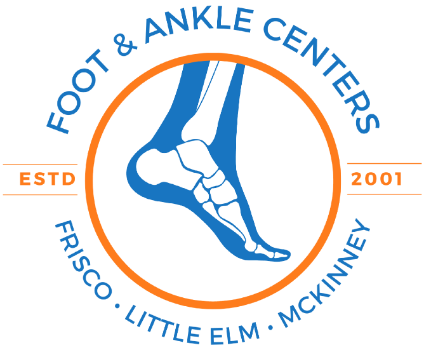Heel Pain: Causes & Treatments for Kids | Foot & Ankle Centers
Thursday, July 31, 2025 | By: Foot & Ankle Centers of Frisco, Little Elm, McKinney
Did you know that nearly 40% of children experience heel pain at some point? As a parent, this can be concerning, especially if your child is complaining of discomfort. Pediatric heel pain isn’t just a minor issue—it can result from various conditions that need proper attention. Dr. Knapp, Dr. Tavakoli, and Dr. Treleven at Foot & Ankle Centers in Frisco, Little Elm, and McKinney offer expert care to help you understand the signs, causes, and effective treatments. In this comprehensive guide, we’ll explore common causes of heel pain in children, treatment options, prevention tips, and when to seek professional help to keep your child active and comfortable.
Understanding Pediatric Heel Pain
As children grow and explore their world, they often face various physical challenges. Engaging in sports, outdoor activities, or simply running around can lead to injuries or discomfort. Understanding potholes along this journey is crucial for promoting healthy development.
Common Causes of Pediatric Heel Pain:
1. Sever’s Disease: Affects active kids ages 8-14; inflammation of the heel’s growth plate from repetitive stress.Symptoms: Heel pain during activity or after rest.
Treatment: Rest, ice, anti-inflammatory meds, custom orthotics.
Symptoms: Pain on the bottom of the foot near the heel, especially after sitting or standing.
Treatment: Stretching, physical therapy, arch supports.
3. Achilles Tendonitis: Overuse injury common in young athletes.
Symptoms: Pain along the back of the heel, worsened with activity.
Treatment: Activity modification, ice, stretching, orthotic evaluation.
The experienced team at Foot & Ankle Centers in Frisco, Little Elm, and McKinney can provide expert diagnosis and personalized treatment plans to help your child find relief and stay active.
Addressing Heel Pain in Your Child
Preventive measures and effective home care can significantly improve your child's comfort and reduce heel pain. Here are some strategies:
1. Stretching and Strengthening Exercises
Regular stretching can help ease tight muscles and tendons that contribute to heel pain.
- Calf Stretch: Stand facing a wall with one foot in front of the other and lean forward, keeping the back heel on the floor.
- Achilles Stretch: Stand on the edge of a step and slowly lower the heels. Hold the position for 15-30 seconds to stretch and strengthen the calf.
2. Orthotic Support
Many children can benefit from custom orthotics or over-the-counter arch supports that provide additional cushioning and align the foot properly.
- Fitting: A consult with one of our podiatrists at Foot & Ankle Centers in Frisco, Little Elm, and McKinney can give recommendations based on your child’s specific foot type and gait patterns.
Night Splints
In some cases, wearing night splints can help address conditions like plantar fasciitis and Achilles tendonitis. Night splints keep the foot in a stretched position, allowing for a gradual and comfortable lengthening of the affected tissues overnight.
Expert Guidance for Prevention
Preventing heel pain starts with your child's daily routine. Here are valuable tips from our team at Foot & Ankle Centers:
- Footwear Matters: Ensure your child wears shoes that fit well, provide arch support, and are appropriate for their activity level.
- Balance Activities: Encourage a mix of low-impact activities and sports to avoid overuse injuries.
- Rest and Recovery: Incorporate rest days to help the body recover and reduce the risk of pain.
When to Seek Help
Some signs indicate it’s time to consult a healthcare professional:
- Persistent heel pain that doesn’t improve with rest
- Severe swelling or bruising
- Difficulty walking or limping
- Any signs of infection such as redness, warmth, or fever
If your child encounters any alarming symptoms, consider reaching out to one of our highly trained podiatrists at Foot & Ankle Centers. They are ready to provide the best care for your child's feet.
Supporting Your Child During Their Recovery
Healing takes time, and emotional support can make a significant difference. Ensure your child understands the importance of their rest and follow-up appointments. Engage them in discussions about their recovery and encourage participation in light activities by switching to alternatives that don’t strain their heels, such as swimming.
Consider keeping them motivated by setting up a goal-oriented challenges, like improving flexibility or walking without discomfort in a week or two. This can help boost their spirits and keep them actively engaged in their recovery.
So now what?
Understanding pediatric heel pain is key to protecting your child’s foot health and keeping them active. By encouraging proper stretching, selecting the right footwear, and knowing when to seek professional care, you can effectively manage and prevent heel pain. If your child is experiencing discomfort, contact the highly trained podiatrists—Dr. Knapp, Dr. Tavakoli, and Dr. Treleven—at Foot & Ankle Centers in Frisco, Little Elm, and McKinney. Their expert care ensures your child gets the treatment they need for a healthier, more active future.


Leave a comment
0 Comments